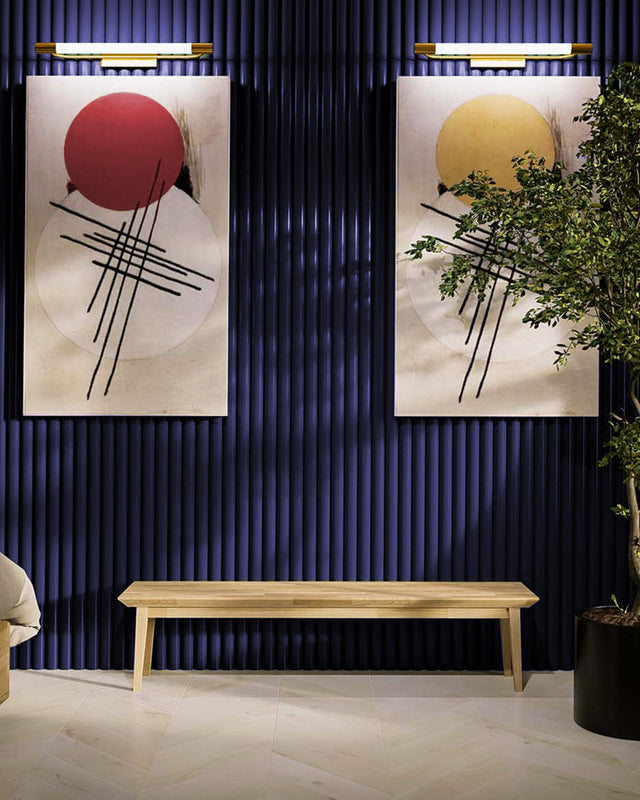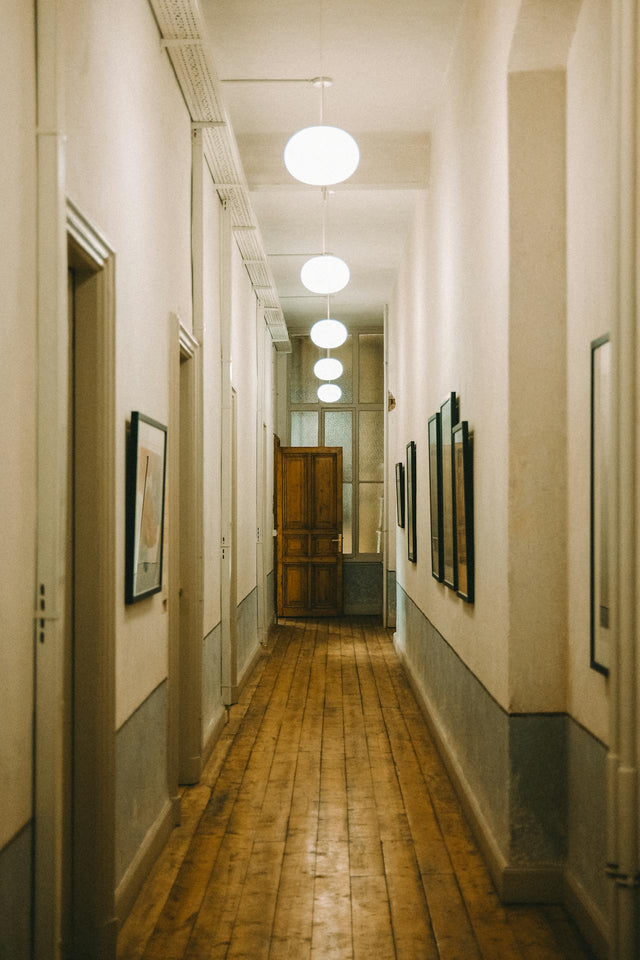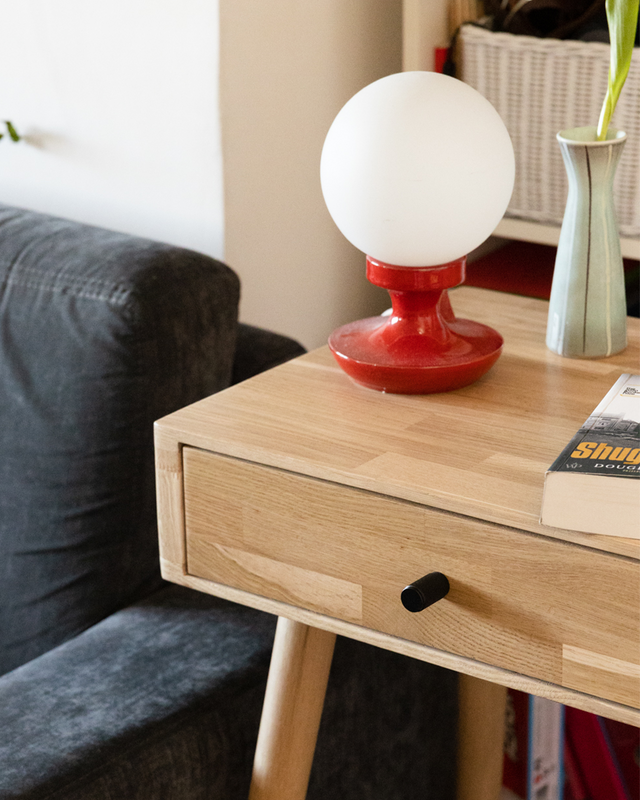Bauhaus interiors - Bauhaus style in interiors
Key assumptions of Bauhaus
The Bauhaus style , also known simply as Bauhaus, is an artistic and architectural movement that forever changed the way we thought about design in the 20th century. It originated in Germany in 1919 and was founded by Walter Gropius . Bauhaus is characterized by simplicity of form, functionality, and minimalism, as well as a unique combination of art and craft. The aim of this approach was to create harmony between function and aesthetics – a real revolution at the time.
The Bauhaus movement was born in response to new challenges that emerged after World War I. Society needed to rebuild and modernize, which required a fresh perspective on architecture and design. Bauhaus sought to combine art with technology, creating spaces that were not only functional but also aesthetic. In this way, Bauhaus became a symbol of modernity and innovation, responding to the needs of a rapidly changing world.
One of the key assumptions of Bauhaus was the belief that form should follow function . This meant that design was to be practical and useful above all else, and not focus on unnecessary ornamentation. This approach was groundbreaking because it rejected traditional, decorative styles in favor of simplicity and functionality. Bauhaus promoted the idea that every element of design must have its own justification and fulfill a specific role.

Minimalism in Bauhaus
Minimalism, one of the main pillars of Bauhaus, involved reducing form to its simplest form. The philosophy of "less is more" became the motto of the movement, which meant that designers should eliminate unnecessary elements and focus on what was really important. Thanks to this, Bauhaus had a huge influence on the development of modern design, laying the foundations for many contemporary architectural and interior styles.
The Bauhaus Legacy
The Bauhaus style not only revolutionized architecture and design, but also changed our approach to space and functionality in everyday life. Its influence can be seen in many contemporary designs that draw on the principles of simplicity and functionality. Contemporary interiors that combine aesthetics with practicality are a direct legacy of the Bauhaus, which shows how enduring and universal the style is.
Icons of the Bauhaus Style
The Bauhaus style, famous for its emphasis on simplicity and functionality , brought the world many designs that still inspire artists around the world. Among these works, the works of such masters as Marcel Breuer , Ludwig Mies van der Rohe and Wilhelm Wagenfeld stand out. Each of them contributed something unique to the development of Bauhaus, creating furniture and objects that became symbols of modern design. Their designs not only reflect the spirit of Bauhaus, but also set standards for contemporary design, remaining relevant despite the passage of time. They are true icons.

Marcel Breuer and the Wassily Chair
Marcel Breuer, one of the most influential designers associated with the Bauhaus, became famous for his innovative furniture that changed the approach to design. His most famous work is the Wassily chair , which has become an icon of the Bauhaus style. Designed in 1925, the chair is distinguished by the use of bent steel tubes and leather elements, which was a real novelty at the time. Breuer was inspired by the construction of a bicycle, which resulted in a lightweight but durable form.
Ludwig Mies van der Rohe and the Barcelona Armchair
Ludwig Mies van der Rohe, the third director of the Bauhaus school, is known for designs that have become icons of modernist design. One of his most recognizable works is the Barcelona Armchair , designed in 1929 for the Barcelona International Exhibition. The armchair, made of quilted leather and X-shaped steel legs, is a symbol of the elegance and simplicity that are characteristic of the Bauhaus style.
The Barcelona Chair, like other designs by Mies, reflects his philosophy of "less is more". Its design is both aesthetic and functional, making it one of the most desirable pieces of furniture in the history of design. Mies van der Rohe, through his designs, showed how modern materials can be combined with classic forms, creating works that are timeless. The Barcelona Chair remains a symbol of luxury and modernity to this day, and its influence on contemporary design is invaluable, inspiring subsequent generations of designers.
Wilhelm Wagenfeld and the Wagenfeld Lamp
Wilhelm Wagenfeld, known as a master of industrial design, contributed greatly to the development of the Bauhaus style with his innovative designs. His most famous work is the Wagenfeld lamp , designed in 1924, which has become a classic of modern design. The lamp, often called the "Bauhaus lamp", is distinguished by its simple, geometric form and the use of modern materials such as glass and metal.
The Wagenfeld lamp is a perfect example of the Bauhaus principle that form should follow function. Its minimalist design and functionality make it not only an aesthetic addition to the interior, but also a practical source of light. Wagenfeld's design shows how art can be combined with technology, creating objects that are both beautiful and useful. This lamp is still in production today and enjoys unwavering popularity, which is evidence of its timeless character and influence on contemporary design, while also being a symbol of the perfect combination of form and function.

Bauhaus Style in Interiors
The Bauhaus style, known for its simplicity and functionality , has enjoyed unflagging popularity in interior design for years – both in office spaces and home spaces, such as kitchens or bathrooms. Its influence on contemporary design is enormous. Bauhaus principles, such as minimalism and the use of modern materials, continue to inspire designers around the world. This approach, which combines aesthetics with practicality, remains relevant and appreciated, regardless of the passage of time. That is why Bauhaus does not lose its importance.
Bauhaus Style in Offices: Functionality and Simplicity
In offices, the Bauhaus style works perfectly, where functionality and simplicity are key. Simple lines, open layouts and a minimalist approach dominate such spaces, which promotes efficient work and concentration. Bauhaus-inspired furniture is distinguished by its ergonomic shapes, and durable materials such as steel and glass are used in its production. This makes it not only durable, but also easy to maintain - which is crucial in everyday use.
-
Simple lines and open layouts promote work efficiency.
-
Furniture made of durable materials such as steel and glass.
-
Ergonomic shapes ensure comfort of use.
-
Easy to keep clean and durable furniture.
Bauhaus-style offices often feature chrome elements that add elegance and modernity. These spaces are designed to maximize the available space, in line with the Bauhaus philosophy that form should follow function. This makes offices in this style not only aesthetically pleasing, but also practical – ideal for modern companies that want to create an inspiring work environment. These are spaces that foster creativity and efficiency.
Bauhaus Style in the Kitchen: Minimalism and Modern Materials
Bauhaus-style kitchens are a harmonious combination of minimalism and modern materials, such as steel and glass. Simple lines and functional solutions make the kitchen not only aesthetic, but above all practical. Steel countertops and glass cabinet fronts give the interior a modern look, while being easy to keep clean - which, as we know, is key in everyday use. This is a space that combines beauty with functionality.
-
Steel countertops and glass cabinet fronts – modern look and easy to keep clean.
-
Simple lines and functional solutions.
-
A minimalist approach to design.
-
Modern materials such as steel and glass.
Many Bauhaus kitchen designs draw inspiration from the work of László Moholy-Nagy, who experimented with form and materials, striving to combine aesthetics with practicality. Bauhaus kitchens often use open shelves and modular storage systems, which allow for the flexible adaptation of space to the needs of users. This is an ideal solution for people who value modernity and functionality in everyday life. After all, the kitchen is the heart of the home, right?
Bauhaus Style in the Bathroom: Simplicity of Form and Functionality
Bauhaus-style bathrooms are characterized by simplicity of form and functionality , which makes them an ideal place to relax and regenerate. In such interiors, materials such as ceramics, stainless steel and glass dominate - not only aesthetic, but also durable and easy to maintain. The minimalist approach to designing Bauhaus-style bathrooms makes the space orderly and harmonious, which promotes a sense of peace. This is a place where you can truly relax.
-
Materials: ceramics, stainless steel, glass – durability and aesthetics.
-
A minimalist approach to design.
-
Simple, geometric forms of washbasins and bathtubs.
-
Easy to keep clean and durable materials.
In Bauhaus-inspired bathrooms, you can often find simple, geometric sinks and bathtubs that emphasize the modern character of the interior. An interesting reference to the Bauhaus style can also be the Wassily armchair - although originally designed as a piece of furniture for the living room, it can be an inspiration for bathroom designers who want to introduce elements of this style to their designs. Thanks to its simplicity and functionality, the Bauhaus style in the bathroom is an excellent choice for people who value modern design and comfort of use. It is a space that combines aesthetics with comfort.

The quintessence of Bauhaus style
Bauhaus can boast classics of modern design. It is possible that in Bauhaus style interiors, wood is combined with colorful, metal furniture, e.g. wooden floor and blue coffee tables.
Primary colors are visible in many accessories for contemporary interiors. Designer lamps in geometric forms made of metal are one of the elements of interior design that emphasize the ideas of Bauhaus . Arrangements are to have a human dimension, and form results from function, NOT the other way around.
Geometric shapes are elements of, among others, wall painting. Uncovered windows are also an expression of admiration for geometric shapes. All window coverings remind us of soft, airy materials that do not fit into Bauhaus in any way.
In geometric shapes we can find primarily elements of applied art. The Bauhaus aesthetic emphasizes the use of geometric templates , which are primarily intended to be functional.
Bauhaus style interiors should be saturated with light. Of course, a large room is conducive to this, but achieving this effect is also possible in smaller interiors. When creating a Bauhaus style project, you need to break away from stereotypical thinking. You don't have to distribute the functions in their standard style, e.g. combine the living room with the kitchen. Quite the opposite! You can combine the bedroom with the kitchen, and although at first this idea may seem crazy and stupid, breaking away from the standards can give surprising effects.
Get inspired by different materials: chrome steel, plastic, powder-coated metal, glass. Geometric furniture made of these materials will be the main accent of such interiors.
However, beware of ornamentation. The lack of ornamentation is the basis of the Bauhaus idea.
The Influence of Bauhaus Architecture on Contemporary Design
Bauhaus, the movement that revolutionized design in the 20th century, left a lasting mark. Its influence is still visible today, especially in the minimalist and industrial trends that dominate contemporary interiors. With its emphasis on simplicity, functionality, and the combination of art and technology, Bauhaus became the foundation for many modern design concepts. It continues to inspire designers around the world today, shaping their approach to form and function.
Minimalist Style: Bauhaus Aesthetics
Minimalism, which has gained immense popularity in recent years, has its roots in the philosophy of Bauhaus. This movement promoted the elimination of unnecessary elements in favor of simplicity and functionality. Modern minimalism draws on this idea, focusing on:
-
clean lines,
-
neutral colors,
-
spaces free from excess decoration.
However, minimalism is not just about aesthetics. It is also a way of thinking that emphasizes quality , not quantity. Bauhaus-inspired interiors are designed to be functional and harmonious, which promotes concentration and relaxation. Therefore, the minimalist style is the perfect choice for those who value peace, order and balance in their daily lives.
Industrial Style: Bauhaus Inspirations
The industrial style, which gained popularity in the 1980s, also draws inspiration from Bauhaus. It is characterized by raw materials such as:
-
concrete,
-
metal,
-
glass.
These materials combine with minimalist design to create interiors reminiscent of factory spaces. This is a direct reference to the functionality and simplicity that were key to Bauhaus.
Similar to Bauhaus, industrial interiors are designed with the idea of maximizing space and functionality. Exposed pipes, concrete walls, and metal accents add a raw yet modern feel to the interior. The industrial style, inspired by Bauhaus, is a great example of how aesthetics can be combined with practicality , creating spaces that are both beautiful and useful.
Primary Colors in Bauhaus Design
Primary colours, such as yellow , red and blue , played a key role in Bauhaus design. They were used as accents to add energy and dynamism to interiors. Contemporary designs often follow this tradition, using primary colours to highlight key elements in a space.
In Bauhaus-inspired designs, primary colors are used with caution, so as not to overwhelm, but to complement the overall composition. This gives interiors a distinct and modern character. This is in line with the Bauhaus principle that form should follow function . Primary colors, as a design element, perfectly show how Bauhaus influenced the contemporary approach to design, combining aesthetics with functionality.




















